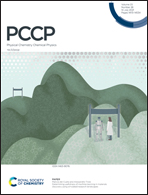Molecular dynamics evidence for nonthermal effects of electric fields on pectin methylesterase activity†
Abstract
Experimental studies relevant to the nonthermal effects of electric fields on biological systems are emerging. However, these effects are poorly understood at the molecular level. The present study investigates pectin methylesterase, a cell wall modifying enzyme in plants, exposed to various electric field strengths. Molecular dynamics (MD) of the enzyme were studied with and without (thermal-only) electric field applications. The measurements were interpreted on the basis of equivalent energy input to gain insights into the effect of electric field treatment time at a constant temperature (50 °C). Results reveal that electric fields exert nonthermal effects on both local and global protein structure. In 1 μs simulations, the results show significant (P ≤ 0.05) shrinkage of the catalytic domain and shortening of enzyme–water hydrogen bond lifetime by a 50 V cm−1 electric field. Unwinding of the helical segments, altered intra- and intermolecular hydrogen bond patterns, and increased hydration are also caused by the 50 V cm−1 electric field. This study serves to understand the electric field influence on the functional role of proteins.



 Please wait while we load your content...
Please wait while we load your content...